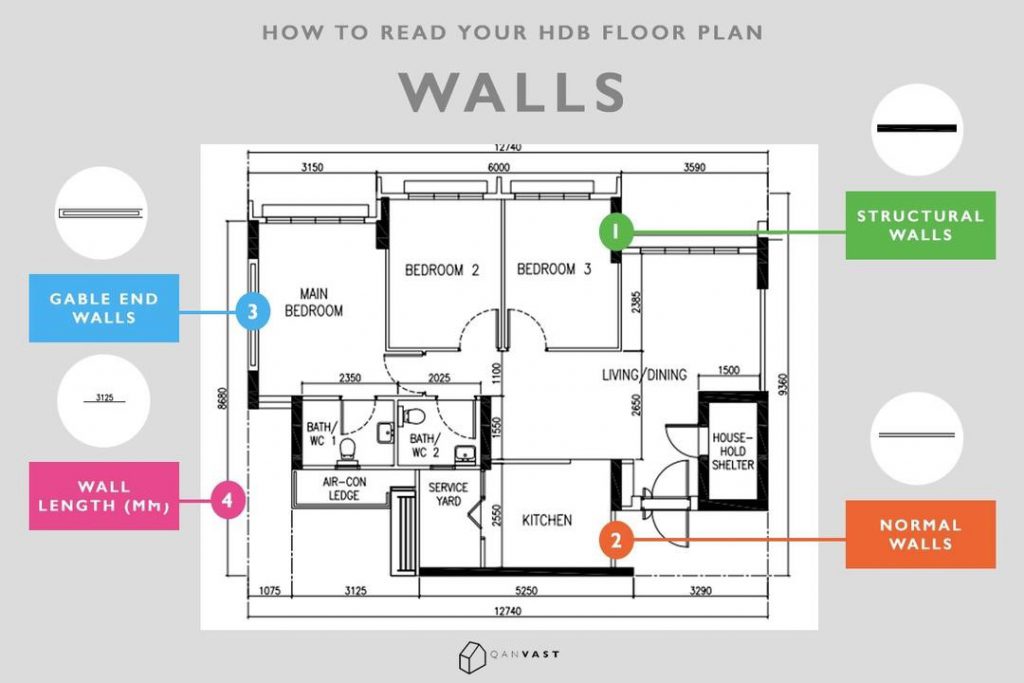How to Read Your HDB Floor Plan in 10 Seconds
So, you’ve just gotten your hands on the layout of your new home and are all set to start planning for your renovation, except for a little hitch: you can’t make any sense of the floor plans. But don’t panic! Simply read our guide below on how common home structures are represented in floor plans, and you’ll be able to figure out everything on your own in no time.
Walls
It’s pretty obvious that lines in a floor plan represent walls, but did you know that each wall type (structural, normal, gable end) is represented differently on a floor plan? Here’s how they are shown:
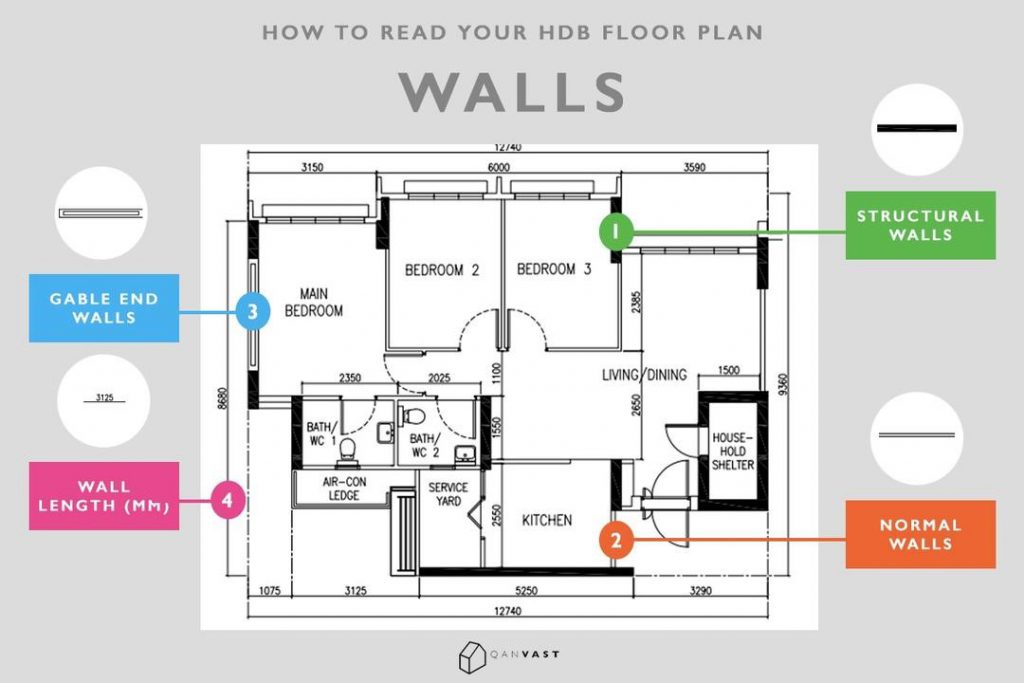
1. Structural Walls
Represented by bold lines, structural walls are foundations or pillars that hold your flat together and they can’t be hacked away.
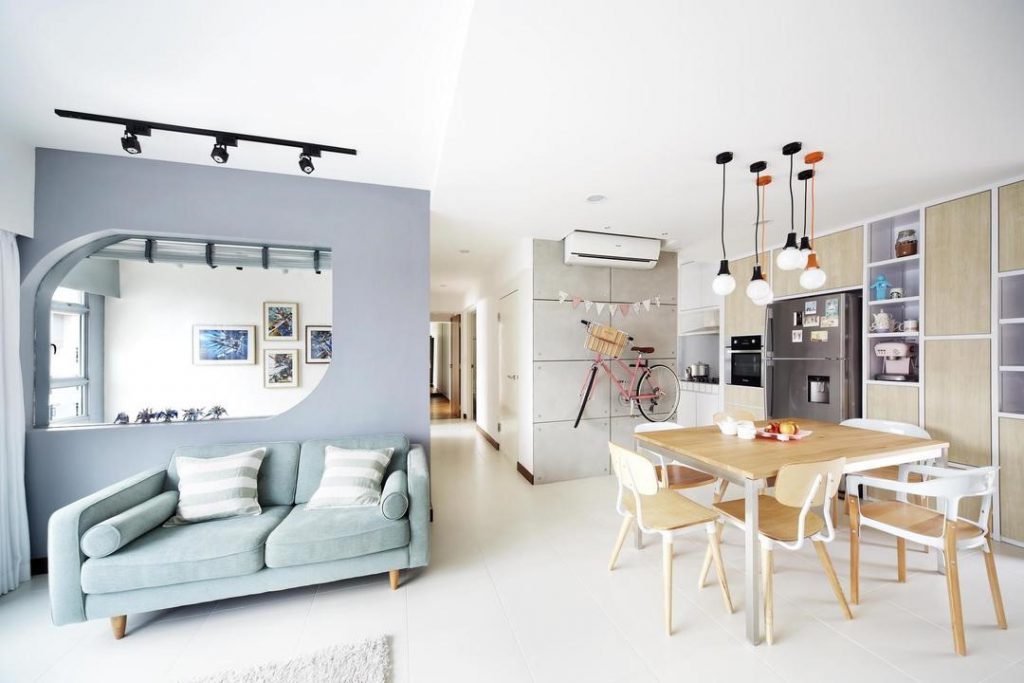
Interior Firm: Free Space Intent
Can’t hack a bomb shelter? Make it a highlight feature wall and space breaker. This fun, concrete-finished wall acts as a separator between the kitchen and bedrooms.
2. Regular Walls
These walls are the partitions that separate the rooms in your home from each other, and they’re shown as a pair of lines with a thin gap between them.
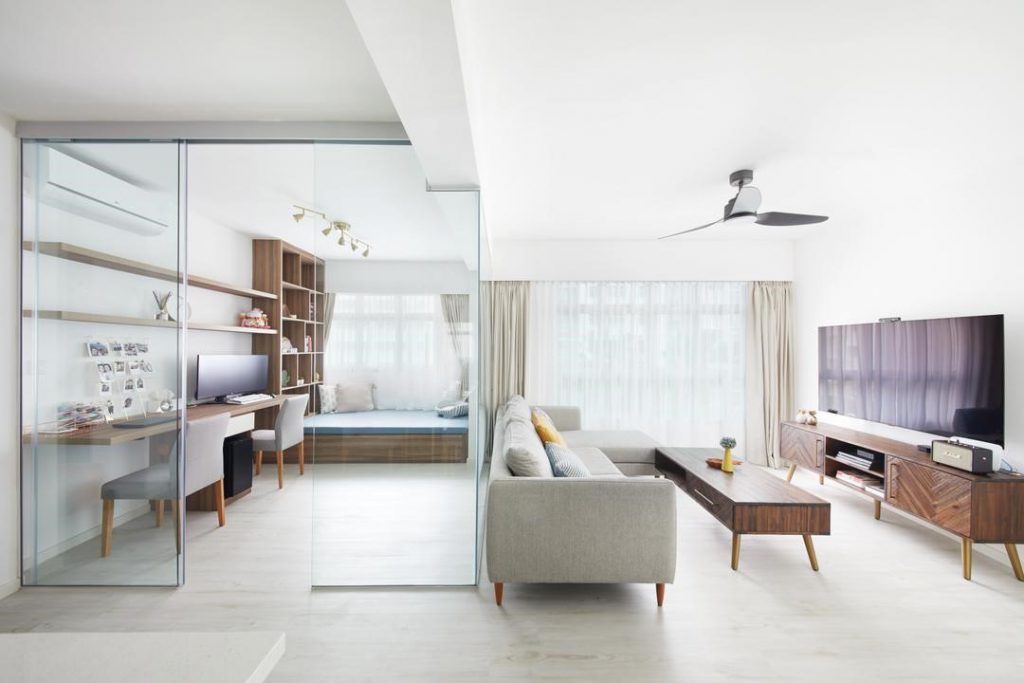
Interior Firm:Design 4 Space
Here’s an idea for your extra study room. Remove the walls and replace them with a glass-box style partition for a clear, unbroken look.
3. Gable-end Walls
Found in corner units, these walls come with short awnings that protect your home from sun and heat.
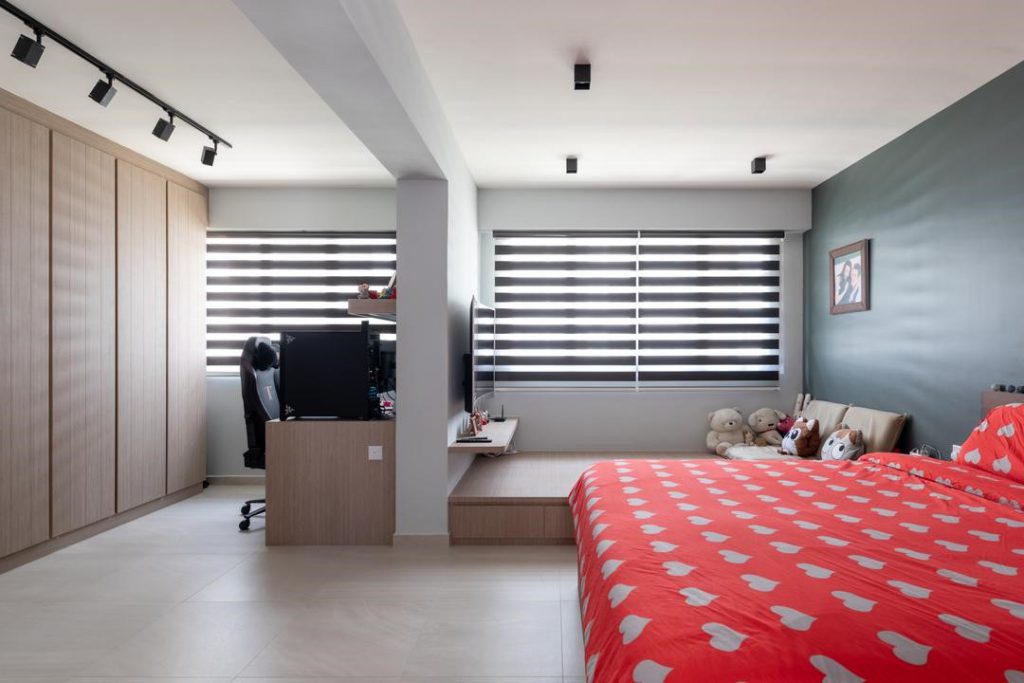
Interior Firm:D5 Studio Image
4. Wall Length (in mm)
The numbers that surround your floor plan indicate wall dimensions.
Doors
Similar to walls, there are a couple of symbols that represent different types of doors:
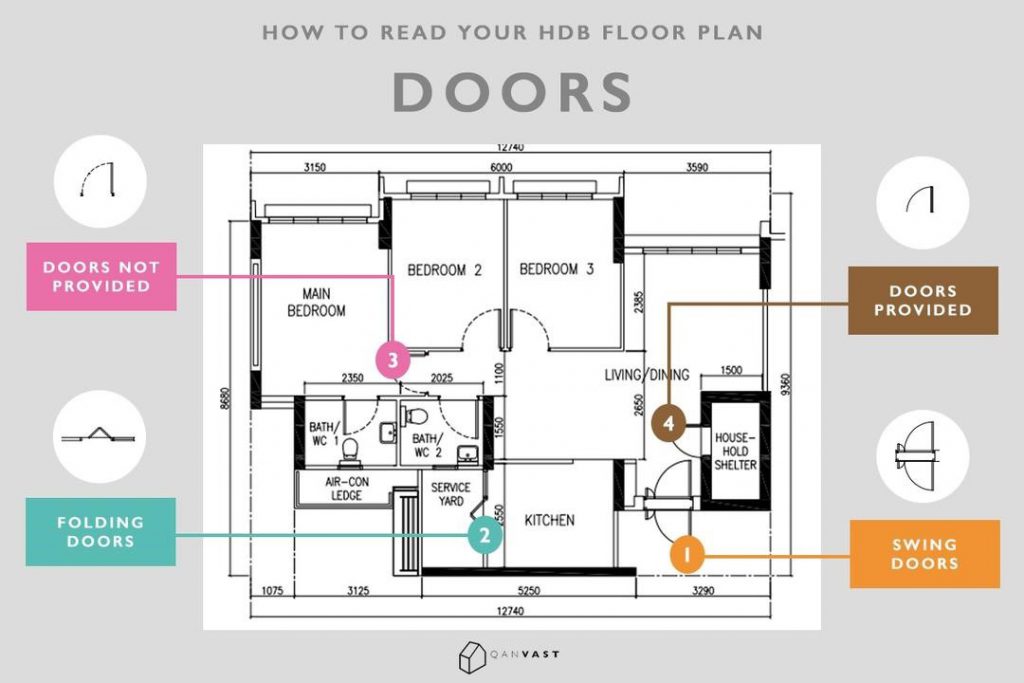
1. Swing Doors
Swing doors are represented by ‘wedge’-like symbols that also indicate their opening radius and direction.
Most doors in HDB homes open inwards (with the only exception being household shelter doors), so avoid adding any furniture or build-ins within their swing radius.
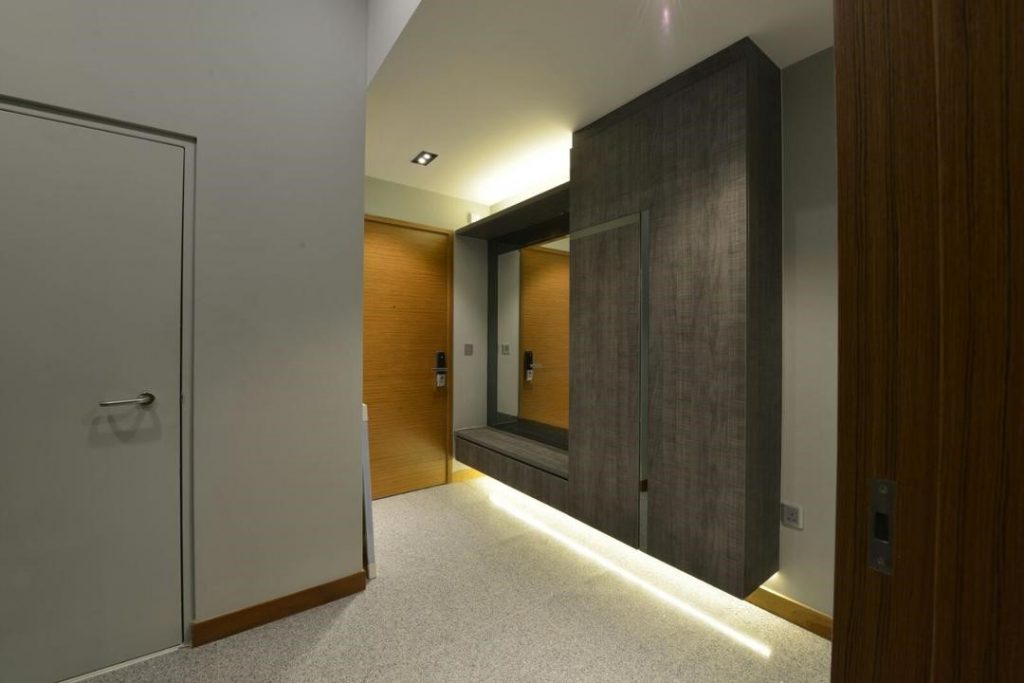
Interior Firm: Earth Interior Design Pte Ltd
Whether you’re living in an HDB home or not, always be sure to install build-ins and storage fixtures in places that don’t interfere with door movement.
2. Folding Doors
More commonly found in service yards and bathrooms, foldable doors are represented by V-shaped symbols.
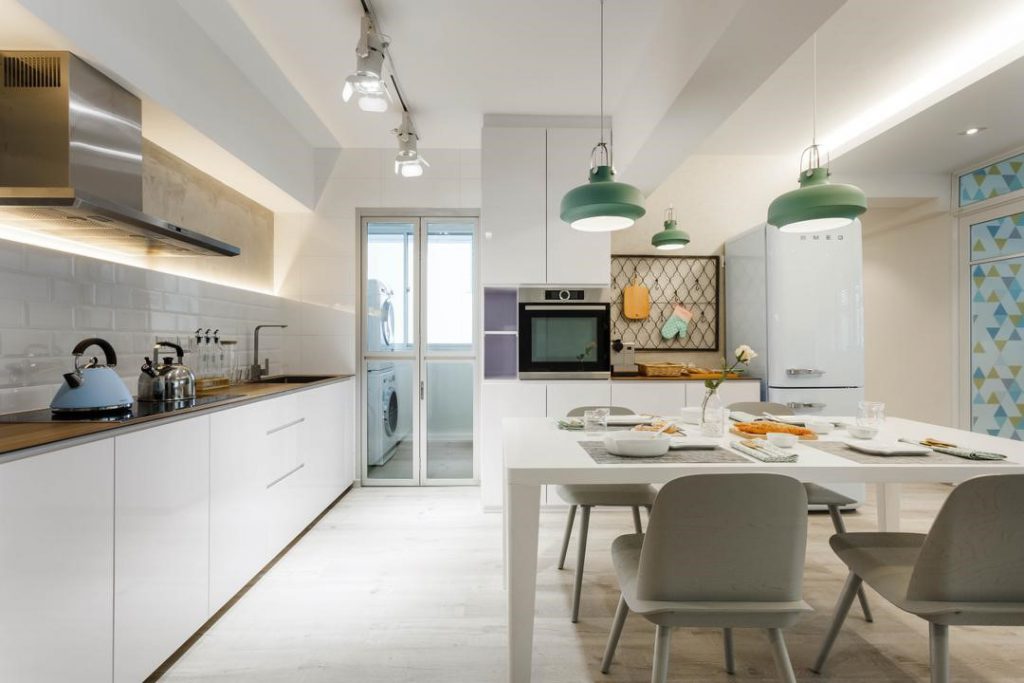
Interior Firm:Mr Shopper Studio
You are free to choose any type of door that you want for a room, as long as it doesn’t require hacking a structural wall. Also, be sure to leave sufficient walkway space!
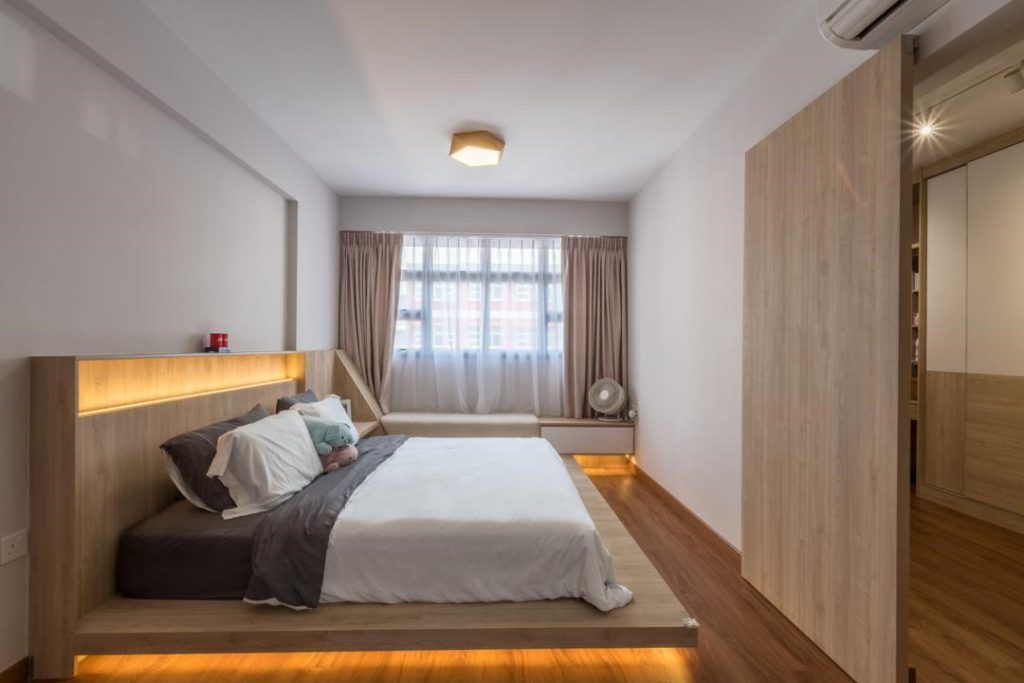
Interior Firm:Space Atelier
Lacking in walkway space? A sliding door will solve your woes because it doesn’t require an opening radius to work.
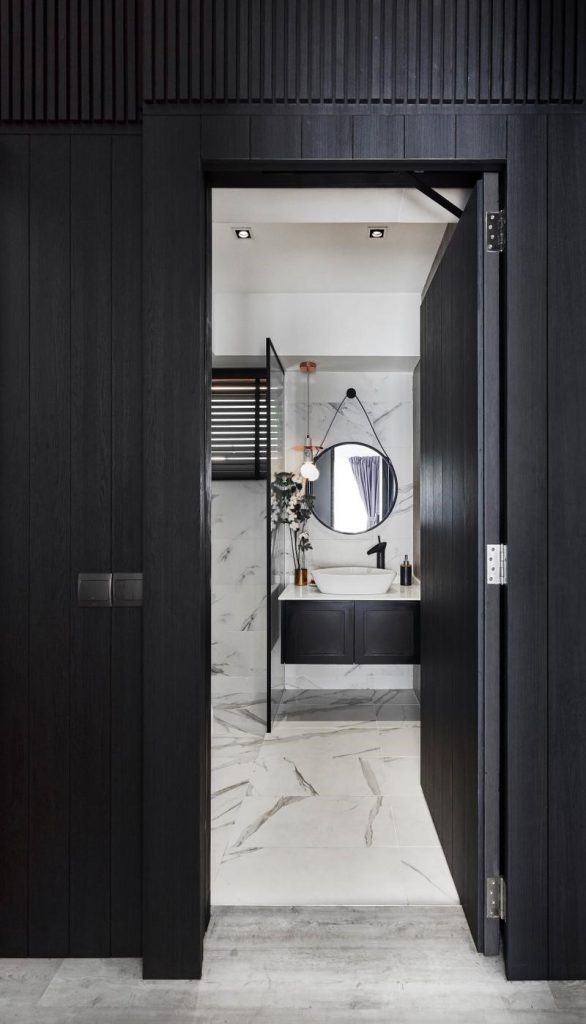
Interior Firm:Rockin Spaces
For a seamless look, camouflage your doors into a feature wall, so that it looks concealed at first glance.
Are your doors provided for?
Knock knock, who’s there? Oh wait, you might not even have a door to knock on. You can find out which doorways have pre-built doors provided by HDB based on the strokes in your floor plan.
- Dotted/ Dashed: Doorways that HDB doesn’t provide doors for
- Solid Line: Doorways that HDB provides doors for
Windows
There are three different types of windows that you will find in HDB flats – sliding windows, casement windows and top hung windows.

1. Sliding Windows
On a floor plan, a sliding window is shown as a thin, hollow line by the walls, which can be hard to notice.
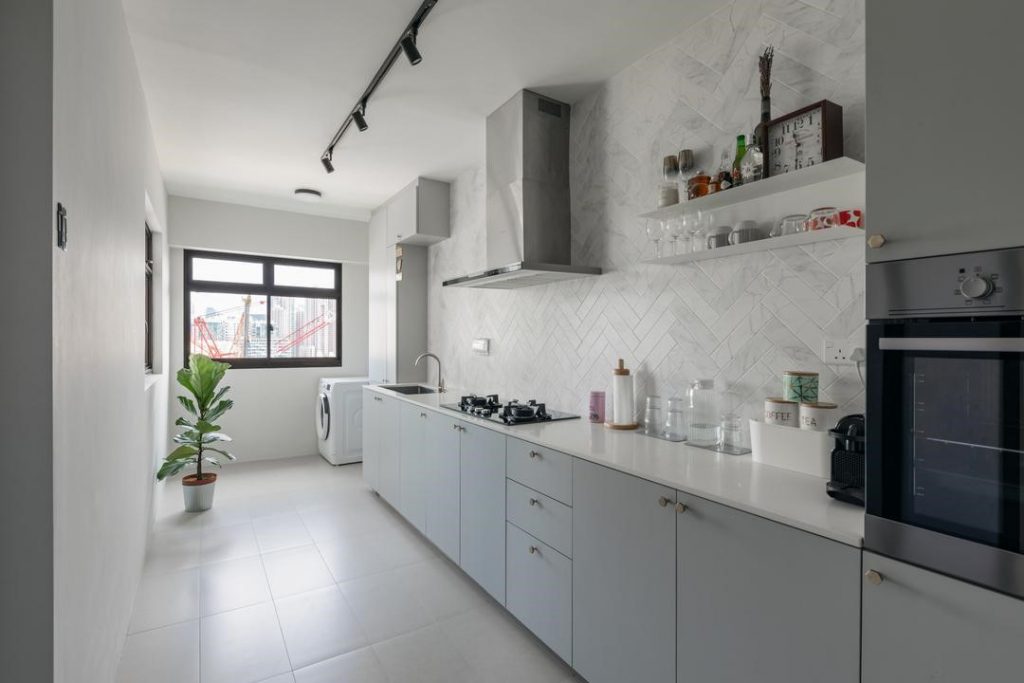
Interior Firm:Crescendo Interior & Lifestyle
Window frames aren’t just functional fixtures – they can also serve as subtle accents in a monochrome space.
2. Casement Windows
Casement windows are those that you can swing open, much like a door. Represented by a pair of thin lines with a thicker one between them (or a ‘closed wedge’) with their opening radius indicated.
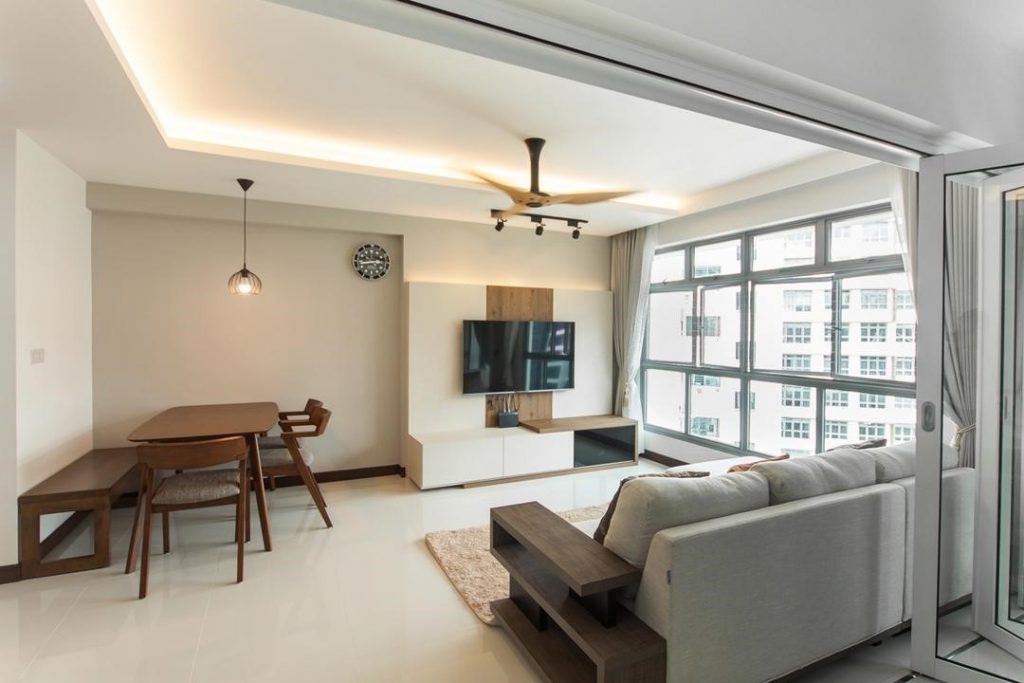
Interior Firm:Space Atelier
Kept simple, the walls surrounding the wide casement windows of this living room serve as a sleek, minimalist ‘frame’.
3. Top Hung Windows
Small top-hung windows that provide ventilation for bathrooms.
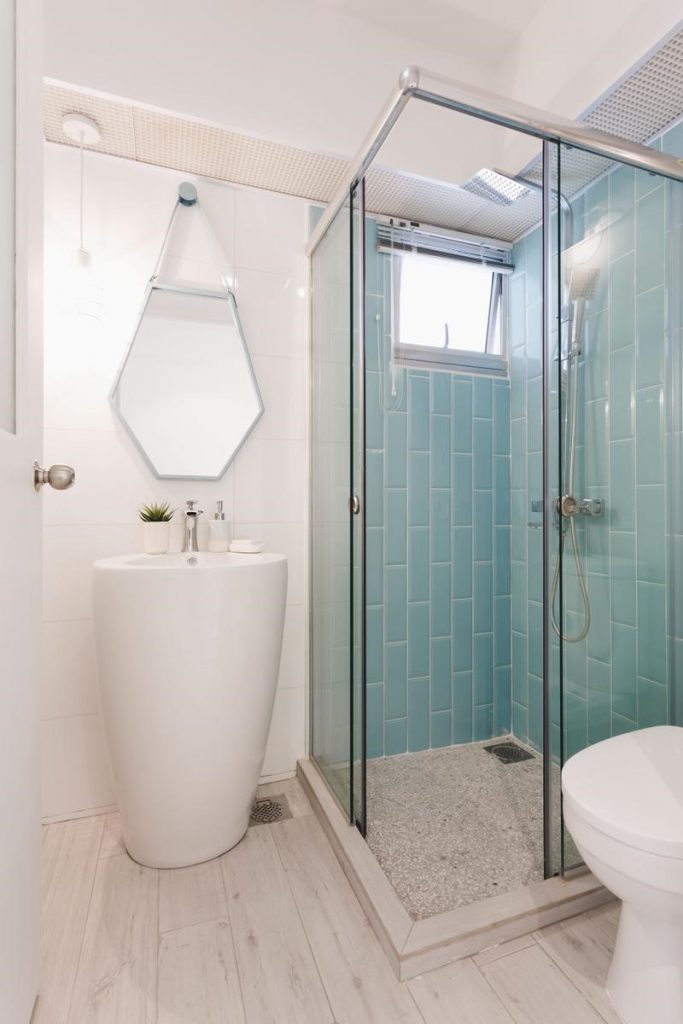
Interior Firm:Mr Shopper Studio
Install a mini blind on your top-hung window if you are worried about privacy. Some window types are better suited for specific uses than others. For example, louvred or top-hung windows are usually installed in bathrooms because they are easier to use from a greater height. On the other hand,casement windows are great for living areas as they provide more efficient ventilation.
Keep in mind that HDB also has some regulations for installing certain types of windows:
- For safety reasons,casement windows cannot be installed along a common corridor
- To maintain a consistent exterior, HDB homeowners aren’t allowed to change the look oftheir 3/4 or full-length windows
Other Symbols
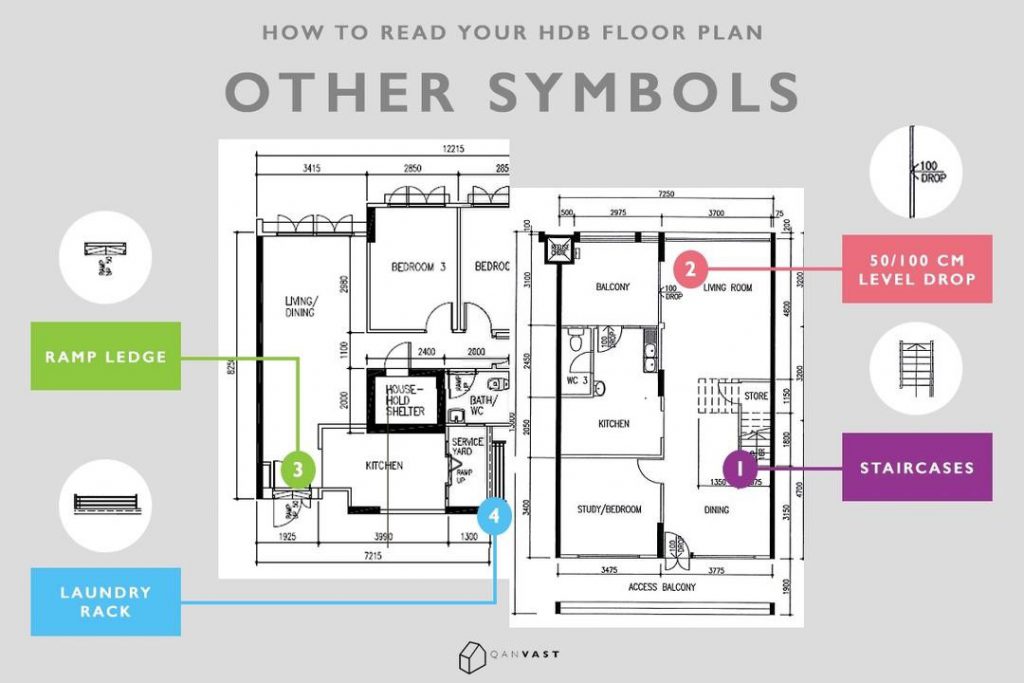
1. Stairs
For those living in a maisonette, you’ll find your home’s stairway indicated as a series of lined rectangles in the floor plan.
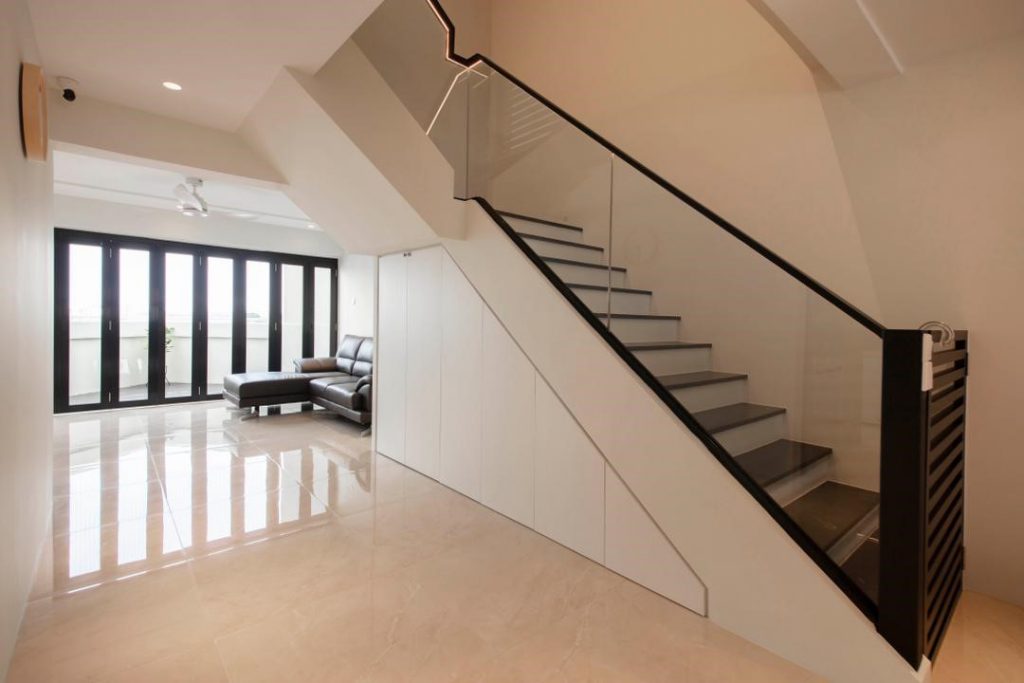
Interior Firm:Dyel Design
If you want a simple way to maximise the space under your stairway, minimalist storage is the way to go.
2. 50/ 100mm Drop
This label indicates a drop of 50mm or 100mm in floor level. These drops are found in wet areas (kitchen, balcony, bathrooms), and they prevent the rest of your home from being flooded by ensuring better drainage.
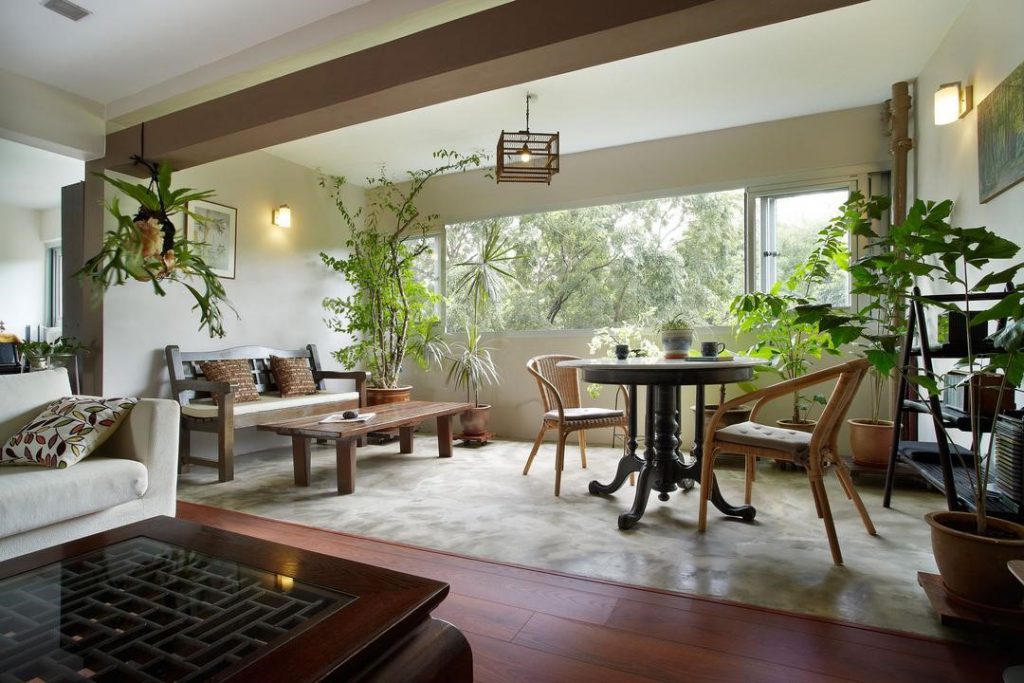
Don’t like having a ledge between your living space and balcony? Create a seamless transition between two spaces by leveling your floors with cement screed.
3. Ramp Up
The ‘Ramp Up’ label indicates home areas with ramps that make it easier to negotiate differences in floor level (such as the 100mm drop).
4. Laundry Rack Area
Service yards in newer HDBs come installed with a laundry rack, which are represented by 3 black lines in floor plans.
This article was contributed by Qanvast, Singapore’s go-to renovation platform. Whether you’re embarking on a major overhaul or a simple refresh, Qanvast can connect you to the right professionals for the job.
Source: mynicehome.gov.sg

